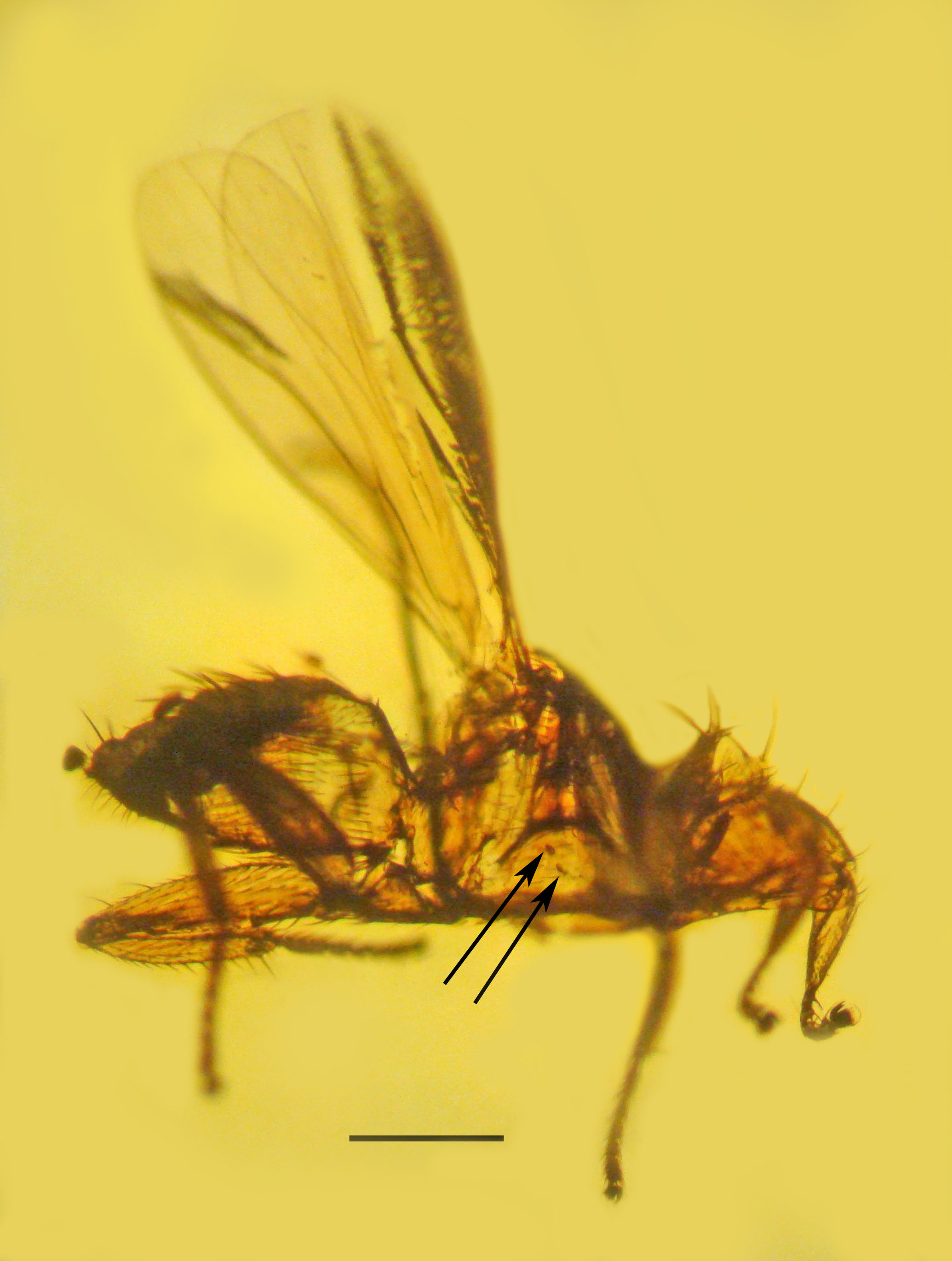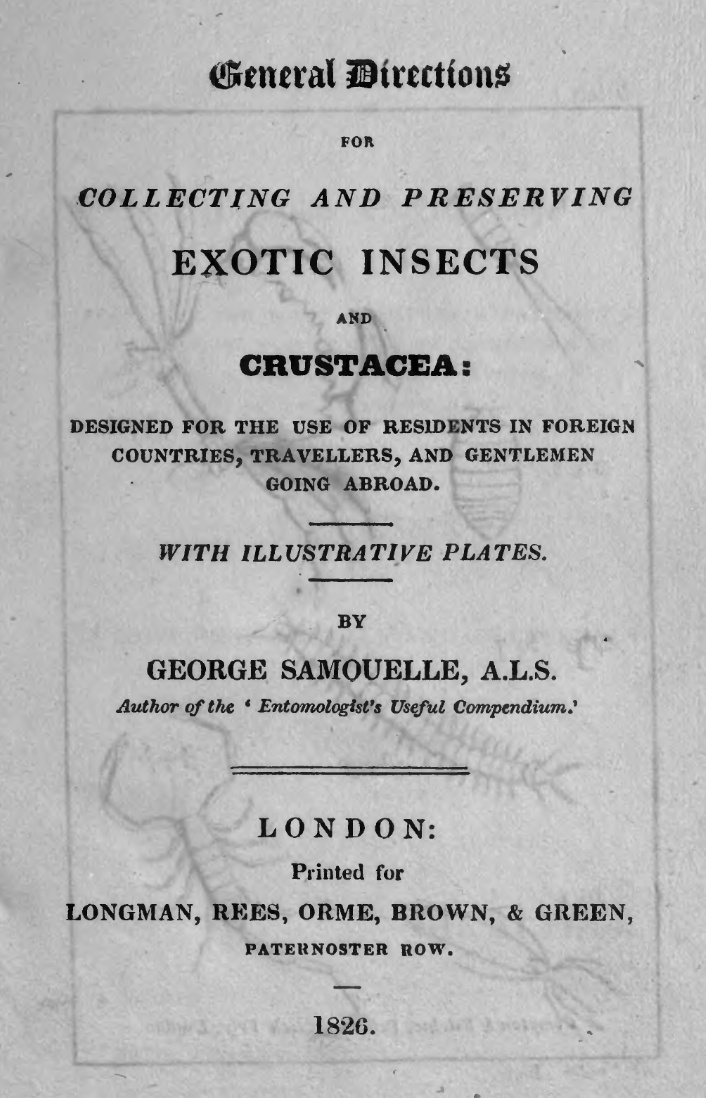|
Nycteribiidae
Nycteribiidae is a family of the true fly superfamily Hippoboscoidea are known as "bat flies", together with their close relatives the Streblidae. As the latter do not seem to be a monophyletic group, it is conceivable that bat flies cannot be united into a single family. They are flattened, spiderlike flies without eyes or wings, and as such bear very little resemblance to other Dipterans. These flies are seldom encountered by general collectors, as they almost never leave the bodies of their hosts. Both males and females take blood meals, thus they qualify as real parasites. Most species are highly host-specific. The family is primarily found in the Old World tropics; a few of the 274 known species occur in the Neotropics and in Europe. Genera * Subfamily Archinycteribiinae Maa, 1975 :* '' Archinycteribia'' Speiser, 1901 *Subfamily Cyclopodiinae Maa, 1965 :* '' Cyclopodia'' Kolenati, 1863 :* '' Dipseliopoda'' Theodor, 1955 :* '' Eucampsipoda'' Kolenati, 1857 :* '' Leptocy ... [...More Info...] [...Related Items...] OR: [Wikipedia] [Google] [Baidu] |
Basilia (genus)
''Basilia'' is a genus of bat fly, flies in the family Nycteribiidae. Species within this genus are: *''Basilia afghanica'' *''Basilia aitkeni'' *''Basilia anceps'' *''Basilia anomala'' *''Basilia ansifera'' *''Basilia antrozoi'' *''Basilia barbarae'' *''Basilia bathybothyra'' *''Basilia benkingi'' *''Basilia bequaerti'' *''Basilia boardmani'' *''Basilia borneensis'' *''Basilia carteri'' *''Basilia compar'' *''Basilia constricta'' *''Basilia corynorhini'' *''Basilia costaricensis'' *''Basilia currani'' *''Basilia daganiae'' *''Basilia dubia'' *''Basilia dunni'' *''Basilia echinata'' *''Basilia eileenae'' *''Basilia endoi'' *''Basilia falcozi'' *''Basilia ferrisi'' *''Basilia ferruginea'' *''Basilia fletcheri'' *''Basilia forcipata'' *''Basilia glabra'' *''Basilia hamsmithi'' *''Basilia handleyi'' *''Basilia hispida'' *''Basilia hughscotti'' *''Basilia hystrix'' *''Basilia indivisa'' *''Basilia italica'' *''Basilia japonica'' *''Basilia jellisoni'' *''Basilia juquiensis'' *''Basili ... [...More Info...] [...Related Items...] OR: [Wikipedia] [Google] [Baidu] |
Streblidae
The Streblidae are a family of flies in the superfamily Hippoboscoidea, and together with their relatives the Nycteribiidae, are known as bat flies. They are winged or wingless ectoparasites of bats, and often have long legs. They appear to be host-specific, with different species of bat flies occurring only on particular species of bat hosts, sometimes with multiple species of flies sharing a host bat. Systematics The 237 or so species are divided among roughly 33 genera and five subfamilies. The monophyly of this family has not been supported. The streblid subfamily Trichobiinae may be more closely related to the Nycteriboscinae and other lineages in the Nycteribiidae. Several authors favor splitting the family into an Old World lineage consisting of the Ascodipterinae and Nycteriboscinae and a New World lineage containing all other subfamilies. The former would be named Ascodipterinae and the latter would retain the name Streblidae. Alternatively, the Streblidae and Nycter ... [...More Info...] [...Related Items...] OR: [Wikipedia] [Google] [Baidu] |
Hippoboscoidea
Hippoboscoidea is a superfamily of the Calyptratae. The flies in this superfamily are blood-feeding obligate parasites of their hosts. Four families are often placed here: * Glossinidae - Tsetse flies *Hippoboscidae - Ked flies *Nycteribiidae - Bat flies *Streblidae - Bat flies (Note that the Mystacinobiidae, while also a bat fly, belongs to the superfamily Oestroidea). The Hippoboscidae are commonly called louse flies or ked flies. The bat flies are Nycteribiidae and Streblidae (along with Mystacinobiidae); the Streblidae are probably not monophyletic. The family Glossinidae, monotypic as to genus, contains the tsetse flies, economically important as the vectors of trypanosomiasis. The enigmatic Mormotomyiidae are believed to belong to the Ephydroidea and not to Hippoboscoidea as previously construed. In older literature, this group is often referred to as the Pupipara ("pupa A pupa ( la, pupa, "doll"; plural: ''pupae'') is the life stage of some insects undergoing transfor ... [...More Info...] [...Related Items...] OR: [Wikipedia] [Google] [Baidu] |
Paul Gustav Eduard Speiser
Paul Gustav Eduard Speiser (1877–1945) was a German entomologist who specialised in Diptera. Speiser was first a physician, then a ''Medizinalrat'', a medical adviser to a district. He worked on world Diptera, especially Nycteribiidae Nycteribiidae is a family of the true fly superfamily Hippoboscoidea are known as "bat flies", together with their close relatives the Streblidae. As the latter do not seem to be a monophyletic group, it is conceivable that bat flies cannot be u ..., and was an eminent medical entomologist. Works (Partial list) *1900. Venti Specie di Zanzare (Culicidae) Italiane Classate e Descritte e Indicate Secondo la Loro Distribuzione corologica. ''Centralblatt Bact. Parasit und Infektioskrankheiten'' 28: 297–402. *1901. Ueber die Nycteribiiden, Fledermausparasiten aus der Gruppe der pupiparen Dipteren. ''Archiv für Naturgeschichte'' 66: 31–70. *1902. Studien Uber Diptera Pupipara. ''Z. Syst. Hym. Dipt.'' 2: 145–180. *1902. Diptera (Supplement). D ... [...More Info...] [...Related Items...] OR: [Wikipedia] [Google] [Baidu] |
George Samouelle
George Samouelle (–1846) was a curator in the British Museum (Natural History) of "no real scientific aptitude". Originally employed as a bookseller for Longman & Co., Samouelle joined the Natural History Museum at the same time as William Elford Leach. Leach appears to have aided Samouelle greatly, with Bate & Westwood stating "Dr. Leach is the principal authority for Samouelle's work"; when Leach left the museum, Samouelle took over his position, but he "seemed incapable of independent work". Twenty years later, in 1840, after neglecting his work, drinking, insulting his superiors, and on one occasion, removing the labels from Adam White's specimens, Samouelle was sacked. He died less than five years later. Samouelle was primarily interested in Lepidoptera but also wrote ''A nomenclature of British Entomology, or a catalogue of above 4000 species of the Classes Crustacea, Myriapoda, Spiders, Mites and insects intended as labels for cabinets of Insects, etc., alphabetically a ... [...More Info...] [...Related Items...] OR: [Wikipedia] [Google] [Baidu] |
Oskar Theodor
Oskar Theodor (3 October 1898 – 1987) was an Israeli entomologist who specialised in Diptera. Born in Königsberg, East Prussia (now Kaliningrad, Russia) he came to pre-Israel Palestine following a year's service as an orderly in the Imperial German Army in World War I. In 1921 he became an assistant in the Government of Palestine Department of Health, and in 1923 he transferred to the Malaria Research Unit in Haifa. In 1925 he became an assistant in the Department of Parasitology in the University of Jerusalem, where he remained for the rest of his career. In 1928, Oskar Theodor returned briefly to Königsberg to complete his Ph.D. in entomology at the University of Königsberg The University of Königsberg (german: Albertus-Universität Königsberg) was the university of Königsberg in East Prussia. It was founded in 1544 as the world's second Protestant academy (after the University of Marburg) by Duke Albert of Prussi .... References 1898 births 1987 deaths Dipt ... [...More Info...] [...Related Items...] OR: [Wikipedia] [Google] [Baidu] |
John Obadiah Westwood
John Obadiah Westwood (22 December 1805 – 2 January 1893) was an English entomologist and archaeologist also noted for his artistic talents. He published several illustrated works on insects and antiquities. He was among the first entomologists with an academic position at Oxford University. He was a natural theologian, staunchly anti-Darwinian, and sometimes adopted a quinarian viewpoint. Although he never travelled widely, he described species from around the world on the basis of specimens, especially of the larger, curious, and colourful species, obtained by naturalists and collectors in England. Life and work Westwood was born in a Quaker family in Sheffield, the son of medal and die maker, John Westwood (1774–1850) and Mary, daughter of Edward Betts. He went to school at the Friends' School, Sheffield and later at Lichfield when the family moved there. He apprenticed briefly to become a solicitor and worked briefly as a partner in a firm but gave up a career in law f ... [...More Info...] [...Related Items...] OR: [Wikipedia] [Google] [Baidu] |
Friedrich August Rudolph Kolenati
Friedrich August Rudolph Kolenati (12 September 1812 – 17 July 1864) was a Czechoslovakia, Czech-Ethnic Germans, German botanist and zoologist active primarily in Prague and Brno. Kolenati was born in Prague where he completed elementary school and high school, then after graduation from the Medical Faculty of Charles University as a student of the natural sciences, especially botany and entomology, he continued as an assistant in botany. In 1842 he moved to Russia as an assistant in zoology at the St Petersburg Academy of Sciences. From 1842 to 1845 he participated in explorations of the Caucasus, ranging from the Azov Sea to Nagorno-Karabakh, and later conducted a survey of the lower Don River (Russia), Don River. In 1845 Kolenati returned to Prague, where he was named an Associate Professor of Natural History. In 1848 he played an active part in the revolutionary events of the time, for which he was subsequently arrested. After his release from prison, he gave lectures in min ... [...More Info...] [...Related Items...] OR: [Wikipedia] [Google] [Baidu] |


